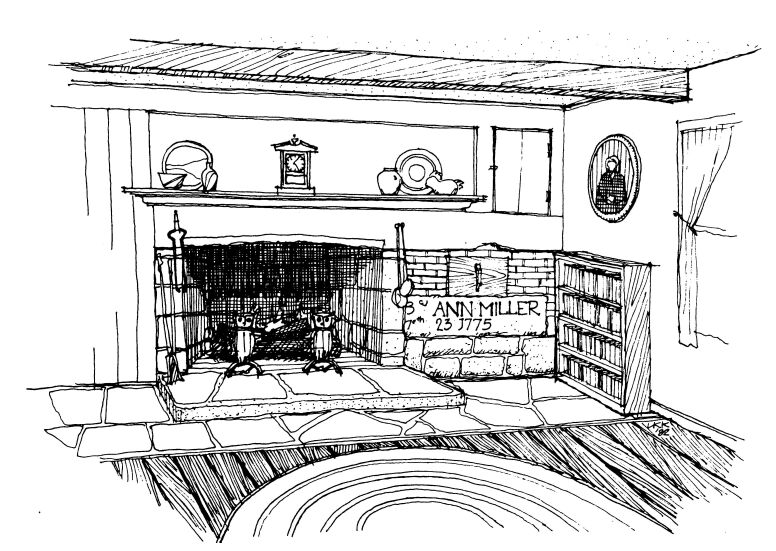 From "Splinters of the Past" by Alex Fowler, Morris County New Jersey Historical Society. |
Date: Tue, 24 Dec 2002 To: buckley@rumford.com From: Alex Fowler Subject: Miscellaneous Ramblings Dear Jim, In another phase of my life, I too got caught up in a relatively ancient technology that holds a lot of promise in the modern world, that being the Stirling engine, which was invented by a Scot clergyman in the early 19th century and later developed in various stages, both high- and low-tech, but never achieving the popularity of its competition. So, I sympathize with your efforts in reviving the Rumford principles and congratulate you on your success. Having seen the frontispiece of your website often enough while intimidating the various PCs in your home, I had the inspiration this morning (on a thankfully restful Christmas eve) to explore the site a bit. Even though I grew up in a (partially) pre-revolutionary home that featured a number of fireplaces, I admit that I hadn't given their design all that much thought, except for one. Unfortunately (well, maybe fortunately), three of the four were not used at all and had been blocked up... only the one in what we called the living room was used. |
|
The one fireplace that I grew to understand, since I fired it so often as a boy, was in the old part of the house, what was once the entire original house, completed c. 1740 by a Dutch immigrant named Johannes Miller. Although probably typical of cooking fireplaces of the time, it is quite large by modern standards, being capable of holding 4' logs with ease. It was not, of course, a Rumford, although it shared some characteristics, particularly the sharply angled sidewalls and a fairly narrow throat, but it was of shallow aspect and its rear wall sloped forward slightly as it rose from the hearth. It was not a "fast" fireplace, since it had a lot of stonework to heat up, but it was wonderfully "soft" in the way the masonry radiated the accumulated heat back into the room. Traditionally, the fire never went out, or not for long. This fireplace was the principal heat for this room all during my childhood. It functioned quite well, only smoked when mismanaged (it liked a sheet of burning newspaper held high to get the draft going), and threw a glorious glow of warmth. Despite the roaring fire that could be created, and despite the fact that this room was not (never was, never could be) tight, it wasn't particularly drafty in there either. One of its most interesting features was the oven constructed into the essentially solid block of masonry that formed the west wall of the house. It consisted of a raised hearth to the right of the main fireplace, accessed through a small door in the face, and extended cantilever-fashion out beyond the wall's outer boundaries, covered by a beehive-type brick structure, which also projected outside. In addition, a chute, just inboard of the oven door, ran down through the stonework to exit into the fireplace proper. My father, a local historian, described its operation to me thus: With a large fire set, as coals accumulated they were shoveled into the oven to bring it to temperature. When the whole was sufficiently hot, the coals and ashes were raked out of the oven and down the chute. Then, in went the bread or whatever, to be as evenly baked as anything could be. As far as I know the oven wasn't vented, although there may have been a channel in the stonework we never discovered. It was country living to the extreme for the original inhabitants, but that fireplace kept all of us warm during several ice storms that took out the power for days (or weeks in one case). We even cooked in it (though not in the oven). I'll attach a couple of illustrations, one showing the house from the west end and the oven "hump" (the end wing was originally the entire house), the other a line drawing of the fireplace inside. Unfortunately, the characteristics of my current house don't lend themselves to a fireplace, but having grown up with a very special one, I can appreciate on a very personal level your enthusiasm and effort to restore the Rumford idea. I noticed while working in your basement office that you have retrofit radiant heat under your wood floor. I am contemplating such an installation at some point. Perhaps I could pick your brain sometime. Warm holiday wishes to you and Bonnie. Alex
|

Superior Clay Bake Ovens
Buckley Rumford Fireplaces
Copyright 1996 - 2009 Jim Buckley
All rights reserved.
webmaster
